

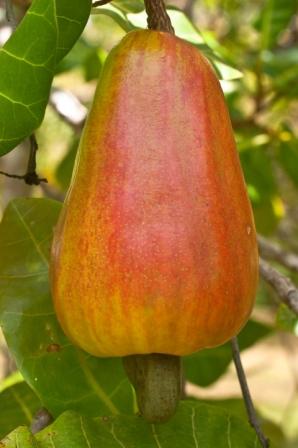
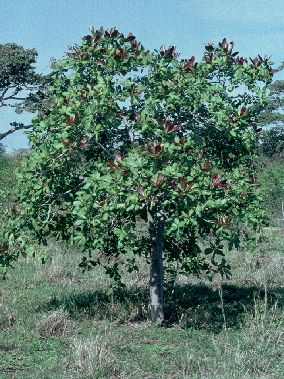
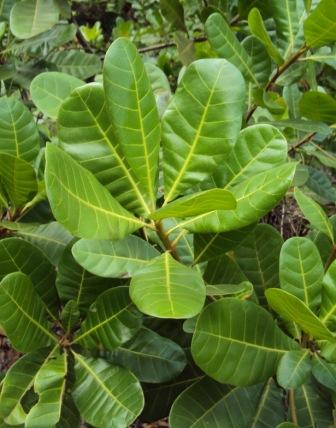
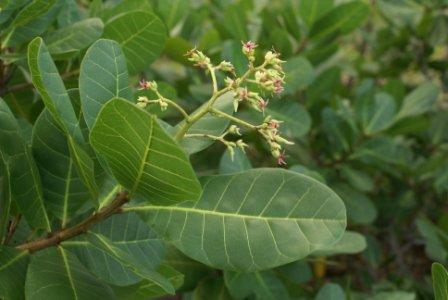
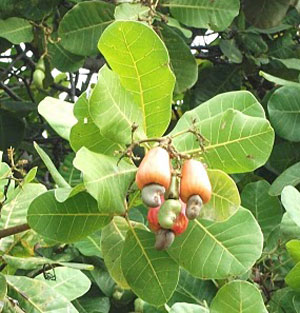
• It is a medium-sized tree, spreading, evergreen, much branched.• Leaves are spirally arranged green in color.• Flowers are Pale green to reddish in color• Fruit is a Psedocarp, pearshaped.• The true fruit is single seeded.
• Seed collected during Apirl –May• Freshly collected seeds are stored in guny bags for 8 months.• Medium sized nut are best for regeneration.• Germination capacity is 70 – 80%• Seeds 150 to 200 / Kg.
• Soft wood grafting is most successful and commercially viable technique, giving 70% success rate. • It is similar to that of epicotyl grafting, except the age of the rootstock.
• Pits are completely with top soil mixed FYM.• Planting done after the onset of monsoon, plant the graft in the center of each pit and support it with appropriate staking.• Take care that graft union is 10 –15 cm above the ground level. • Ensure regular removal of side shoots arising below the graft joint.• Normal planting in Square system: Pits of 60 cm X 60 cm X 60 cm size at a spacing of 7m X 7 m. (204 grafts / ha).• High density Planting in square system: Pit of 60 cm X 60 cm X 60 cm size at a spacing of 5m X 5m ( 400 grafts / ha)
• Allow the trunk to grow up to a height of 1 m by removing side branches.• Prune the dried, diseased and chris-crossing lower branches every year.
• Cropping starts from 4th year.• The harvesting commences from February and continues till May.
• About 10 – 15 kg per tree (2- 3 tonnes/ha) of raw nut yield may be expected from 10th year onwards, • About 70 – 100 kg per tree (15 –20 tonnes/ ha.) of cashew apple yield can be expected.
Intercropping:
• It is cultivated for its Nuts• The cake remaining after oil has been extracted from the kernel serves as animal food. • Seed coats are usedas poultry feed.• Wood is used for making wheel hubs, yoke, fishing boats, furniture, false ceilings and interior decoration.
Fodder: The cake remaining after oil has been extracted from the kernel serves as animal food. Seed coats are used as poultry feed. Fuel: The wood is popular for firewood and charcoal. The residue of the shell is often used as fuel in cashew nut shell liquid extraction plants. Fibre: Pulp from the wood is used to fabricate corrugated and hardboard boxes.